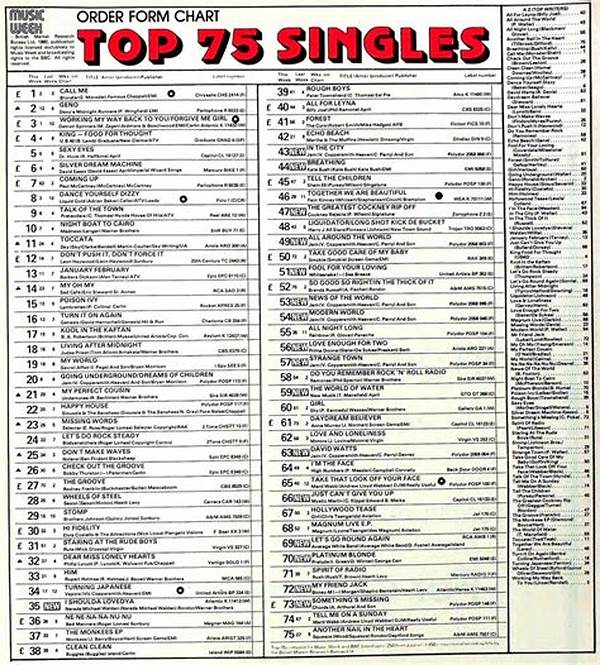In the golden age of music, imagine a world where each note carried an untold story, and each melody weaved a tapestry of emotions through time. The music singles historical top charts serve as the ultimate testament to the power of music in bridging generations. As the first bars of a song hit the airwaves, listeners were taken on breathtaking journeys, creating memories that would last a lifetime.
Read Now : Student-driven Project Team Dynamics
Picture a teenager in the 1960s, flipping through the pages of their favorite music magazine to discover the latest buzz on music singles historical top charts. Each entry spoke of an artist’s triumph, a melody that defied time, and lyrics that resonated with the heartbeat of an era. With bated breath, fans everywhere would tune into their favorite radio station, eagerly awaiting the announcement of the week’s chart-toppers, names that were destined to be etched in music history.
From the Beatles’ magical melodies to the infectious grooves of Madonna’s dance hits, the music singles historical top charts encapsulate the vibrancy and cultural shifts of decades past. It’s not just about numbers or rankings—it’s about the stories behind each chart entry, the artists who challenged the status quo, and the fans who found solace and joy in every rhythm and rhyme.
Legends of the Music Singles Historical Top Charts
For many, the music singles historical top charts were more than just rankings—they were a reflection of societal evolution. In every era, a new class of artist emerged, breaking records and setting new standards. These charts celebrated trailblazers, musical mavericks who pushed boundaries and inspired millions.
In the 1970s, legends like Stevie Wonder dominated the music singles historical top charts with soulful tunes that touched on social issues and personal adversities, bridging cultural divides. As disco took the airwaves by storm, Donna Summer swayed millions with her sultry rhythms and unforgettable voice, capturing the essence of the party scene.
The 1980s and 1990s saw the rise of pop icons, where the music singles historical top charts reflected a blend of innovation and nostalgia. Artists like Michael Jackson redefined performance art with their unparalleled showmanship, while bands like Nirvana spoke to an entire generation with their raw, unfiltered sound.
The Evolution of Music Through Time
With each decade, the music singles historical top charts have not only chronicled the trends of the time but have acted as a mirror to society’s evolution. These charts talk of changing tides in music tastes, innovations in sound technology, and new platforms that gave birth to diverse genres.
In the early days, vinyl ruled the airwaves, giving power to the music singles historical top charts through sales and radio play. As time passed, the digital revolution took center stage, reshaping the landscape of music consumption. Internet streaming platforms became the new battlegrounds, where artists vied for top-streaming statuses and the chance to climb the charts.
Despite the technological advances, one thing remained constant—the connection between artist and audience. The music singles historical top charts still encapsulate the universal emotions and timeless stories shared through music.
Iconic Moments in Music Chart History
1. The Beatles made history by holding all five top spots in the music singles historical top charts in 1964.
2. Whitney Houston’s “I Will Always Love You” remained at number one for 14 weeks, a testament to its emotional depth.
3. In the dawn of the ’90s, Nirvana’s “Smells Like Teen Spirit” reshaped rock music, climbing the charts and influencing a generation.
Read Now : Ensemble-based Directing Methodologies
4. Mariah Carey surprised the world with a holiday classic, “All I Want for Christmas Is You,” that returned to the charts years after its release.
5. The “Macarena” by Los Del Rio brought the world together in dance, dominating the music singles historical top charts for weeks.
Behind the Scenes of Music Chart Success
Stories within the music singles historical top charts reveal layers of ambition, passion, and sheer talent. Aspiring musicians dreamed of being part of these legendary charts, and for some, their hard work paid off as they reached international acclaim.
In recording studios worldwide, producers and songwriters collaborated to create magic—a hit song that could break into these coveted charts. The journey from conception to choreography was intense, often involving tireless rehearsals, promotional tours, and media appearances.
Music executives analyzed trends and cultural cues to position songs strategically, studying data and crafting compelling narratives for the press. As each single climbed the charts, artists celebrated their hard-earned success, their works leaving a remarkable impact on popular culture.
Unsung Heroes and Chart-Topping Anthems
In the ever-evolving world of music, those working behind the scenes often go unnoticed. Yet, without producers, sound engineers, and songwriters, the music singles historical top charts would tell a very different story. These unsung heroes tirelessly championed their craft, ensuring each note and lyric resonated with listeners.
Behind each chart-topping anthem is a tale of collaboration and creativity, where the artist’s vision met the technical prowess of masters in their fields. Like clockwork, this synergy ensured that music stood the test of time, influencing and inspiring the music singles historical top charts we know today.
The Enduring Impact of Historical Top Charts
The stories within the music singles historical top charts continue to fascinate and inspire generations. They represent nostalgia for many, a connection to significant moments in their lives, and a soundtrack for personal milestones.
With each chart update, new songs earn their place among legends, confirming that the power of music remains timeless and universal. These charts serve as an enduring tribute to both makers and listeners, and the dynamic interconnection that music fosters across age and experience.
